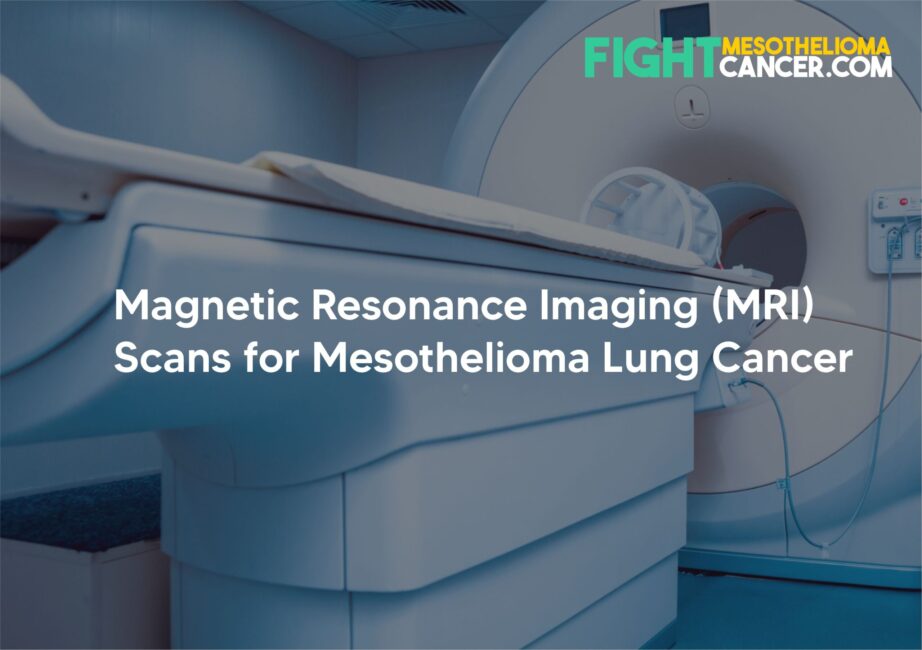Magnetic Resonance Imaging (MRI) is a medical imaging technique used to take pictures of the lungs, structures of the body and organs. It can provide detailed visuals of the body in any plane.
The advantage of using MRI over Computed Tomography (CT) scans is that MRI scans provide greater contrast between different tissues of the body making it easier to detect malignant cancerous cells and tumors.
While CT scans use ionizing radiation or X-rays to acquire images of the lungs, MRI scans use non-ionizing radio frequency (RF) signals to output images of internal organs of the body.
To determine extent and development of tumors in the lungs, Magnetic Resonance Imaging (MRI) scans use strong magnets & radio waves from which the energy released is formed in a pattern.
A specialized computer translates these patterns of radio waves emitted from the tissues into very detailed images of the body. Not only does this produce cross sectional slices of the lungs or the body, it can also output slices that are parallel with the length of the body.
MRI scans are also used to visualize the diaphragm (thin muscle at the bottom of the lungs that helps the body respirate) where malignant mesothelioma tumors could easily spread to.
How Magnetic Resonance Imaging (MRI) Works
When the patient lies on the MRI scanner, the protons or hydrogen nuclei found in water molecules in the body, align with the strong magnetic fields contained on the MRI scanner.
A second electromagnetic field which is perpendicular to the main field pushes protons out of alignment with the main field.
These protons with the force of energy then push back to align with the main fields, emitting a measurable radiofrequency signal.
Since protons in different tissues of the body realign at different speeds, distinguished structures of the body can be easily revealed.
Contrast agents such as barium sulfate or iodine could also be added (intraveously injected into the body) to make more clearer the appearance of malignant tumors, blood vessels, lungs or any inflammation caused by asbestos fibers.
Since MRI does not use ionizing radiation, adding any contrast agents to the body has no dangerous effects and is a very safe procedure.
Magnetic resonance imaging is the #1 technique used to detect any malignant tumors or abnormalities in the heart or blood vessels.
MRI can also help detect tumors in other reproductive organs of the body such as the uterus, testicles, prostrate and ovaries as well as abdomen, pelvis or the chest.
How the Process Works
The patient is asked to lie down on a mobile MRI examination table & straps and bolsters are tied to the table to ensure you stay still and do not move while the examination is taking place.
The examination cube could be as big as 7 feet tall by 7 feet wide. A small radio device with the ability to send/receive radio waves is placed opposite your body to ensure there is proper communication between the MRI scanner and specialized computers located in another room.
The part of the body that is to be examined (the heart, abdomen or the chest, etc) has to be placed on the ‘isocenter’ which is the center of the magnetic fields.
The function of the radio waves energy is to examine the type of tissues that reside in the lungs, are they normal or abnormal?
The MRI mapping system will go over the lungs or chest or the entire body piece by piece building up 2D or 3D maps of tissue types. All this is then tabulated at the end to create one full diagram for the radiologist to view.
To enable blood transfusion, the patient is given contrast agents injected via an intravenous line into the veins on your hands or arms.
You will then be placed on the MRI scanner under the electronic magnets and the radiologist will leave the room. This entire process could take between 45 minutes to 1 hour.
Magnetic Resonance?
The essence behind Magnetic Resonance Imaging (MRI) is the use of magnets. The magnets are measured using a unit known as ‘tesla.’ Today’s magnets come in the 0.5-tesla to 2.0-tesla range.
Tesla helps radiologists measure the strength of the magnetic forces, for example a 0.6 tesla is conservative while a 2.0 tesla magnetic force is very high or the extreme.
The magnetic force exerted on a body increases exponentially as it nears the object. At 0.5 tesla, the patient may be closer to the magnetic surface of the MRI scanner.
At a magnetic force of 2.0 tesla, the radiologist may position the patient a little farther away from the magnetic strip.
The type of magnet most commonly used in MRI machines is the Superconducting magnet (picture above). A superconducting magnet contains coils & wires throuch which electricity is passed to create the radiofrequency signals.
The wires are bathed in liquid helium at 452.4 degrees below zero, which is extremely cold! Not to worry though, you will not feel this cold because the helium liquid is placed inside a vacuum flask (shown as Seawater Duct in the diagram). Thanks to the extreme cold, any resistance that this magnet faces is reduced to 0.
Precautions
Objects such as pens, keys, paperclips, scissors, credit cards, bank cards or anything else with a magnetic strip on it should NOT be taken into the MRI scanner room.
This is because the MRI scanner could easily pull these objects into the scanner and hurt the patient or anyone else in the room. The MRI scanner could also erase any magnetic strip on credit or bank cards.
dr. Maryama













